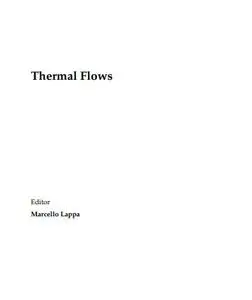April 2024
| Su | Mo | Tu | We | Th | Fr | Sa |
|---|---|---|---|---|---|---|
| 31 | 1 | 2 | 3 | 4 | 5 | 6 |
| 7 | 8 | 9 | 10 | 11 | 12 | 13 |
| 14 | 15 | 16 | 17 | 18 | 19 | 20 |
| 21 | 22 | 23 | 24 | 25 | 26 | 27 |
| 28 | 29 | 30 | 1 | 2 | 3 | 4 |
Thermal Flows
Date: 23 Mar 2022 05:24:30
Flows of thermal origin and heat transfer problems are central in a variety of disciplines and industrial applications. The present Special Issue entitled “Thermal Flows” consists of a collection of studies by distinct investigators and research groups, dealing with different types of flows relevant to both natural and technological contexts.
It comprises 11 papers covering some of the latest advances in these fields. Both reviews of the state-of-the-art and new theoretical, numerical and experimental investigations are presented, which illustrate the structure of these flows, their stability behavior and the possible bifurcations to different patterns of symmetry and/or spatiotemporal regimes. Moreover, different categories of fluids are considered (liquid metals, gases, common fluids such as water and silicone oils, organic and inorganic transparent liquids and nanofluids). The first part of this collection [1–3] focuses on a very classical problem, generally falling under the heading of Rayleigh–Bénard convection (RB), that is, the behavior of fluid systems heated from below and cooled from above. In particular, the first study [1] finds its motivations in the field of thermal comfort in the building heating and ventilation sector, where thermal control is traditionally implemented via floor heating and/or ceiling cooling; interestingly, the response of RB convection to the application of time-periodic cooling is assessed by means of sophisticated LBM simulations. Thermogravitational convection is still at the root of the following two numerical investigations [2,3], where, however, a shift is implemented in the intended outcomes. In particular, the context is changed from the design of heating/cooling systems to the much more fundamental area relating to natural phenomena of a geophysical or astrophysical interest. Indeed, flows of the RB type are also known for their remarkable ability to produce important large-scale features (such as a self-sustained magnetic field) in rotating cosmic objects, relevant exemplars being the sun [2] and terrestrial or gas giant planets [3]. Rotating thermal convection is yet the main subject of analysis in [4], where the non-linear dynamics of such flow are considered on the surface of a hemisphere. It is shown that, just like a half soap bubble located on a heated plate, a hemisphere undergoing rigid or differential rotation can mimic the behavior of large-scale fluid systems (the numerous atmospheric and oceanic flows, which can effectively be modeled as two-dimensional thermal convection on a curved surface).



